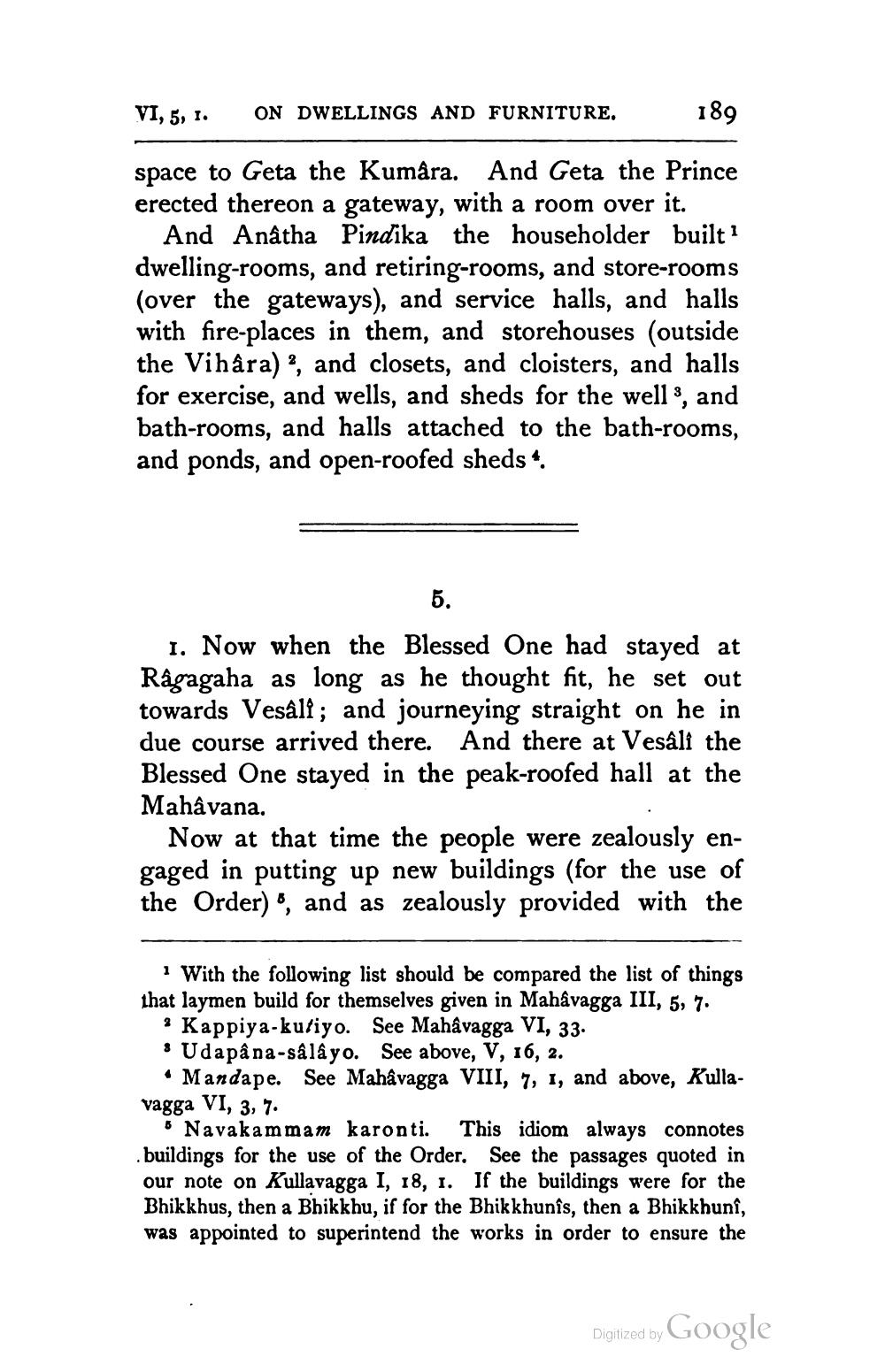________________
VI, 5, 1.
ON DWELLINGS AND FURNITURE.
189
space to Geta the Kumâra. And Geta the Prince erected thereon a gateway, with a room over it.
And Anatha Pindika the householder built? dwelling-rooms, and retiring-rooms, and store-rooms (over the gateways), and service halls, and halls with fire-places in them, and storehouses (outside the Vihara) ?, and closets, and cloisters, and halls for exercise, and wells, and sheds for the wells, and bath-rooms, and halls attached to the bath-rooms, and ponds, and open-roofed sheds *.
1. Now when the Blessed One had stayed at Râgagaha as long as he thought fit, he set out towards Vesâlt; and journeying straight on he in due course arrived there. And there at Vesali the Blessed One stayed in the peak-roofed hall at the Mahâvana.
Now at that time the people were zealously engaged in putting up new buildings (for the use of the Order) ", and as zealously provided with the
1 With the following list should be compared the list of things that laymen build for themselves given in Mahavagga III, 5, 7.
Kappiya-kutiyo. See Mahâvagga VI, 33. * Uda pâna-sâlâ yo. See above, V, 16, 2.
• Mandape. See Mahâvagga VIII, 7, 1, and above, Kullavagga VI, 3, 7.
o Navakammam karonti. This idiom always connotes .buildings for the use of the Order, See the passages quoted in our note on Kullavagga I, 18, 1. If the buildings were for the Bhikkhus, then a Bhikkhu, if for the Bhikkhunîs, then a Bhikkhuni, was appointed to superintend the works in order to ensure the
Digitized by
Digitized by Google




